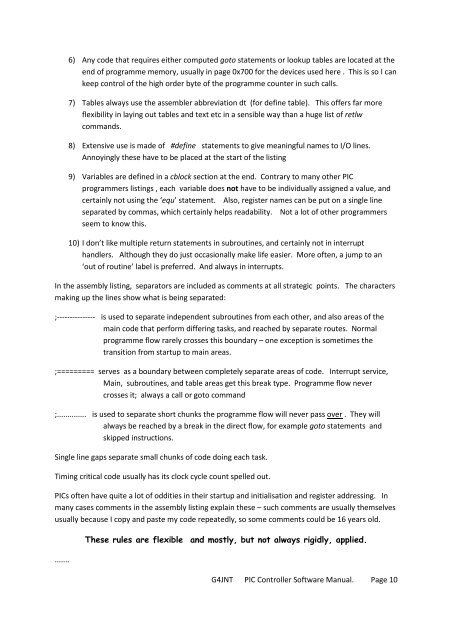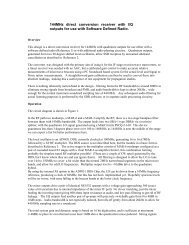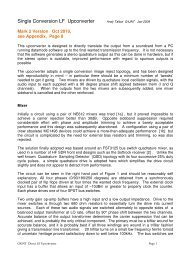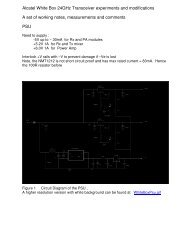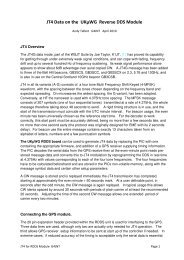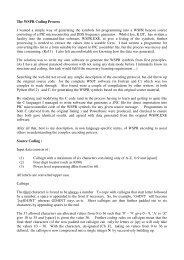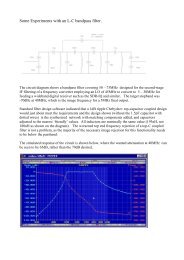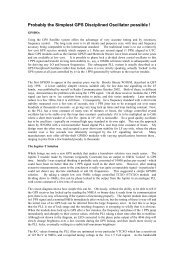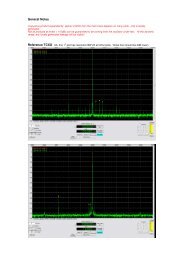Software Manual - G4JNT
Software Manual - G4JNT
Software Manual - G4JNT
Create successful ePaper yourself
Turn your PDF publications into a flip-book with our unique Google optimized e-Paper software.
6) Any code that requires either computed goto statements or lookup tables are located at the<br />
end of programme memory, usually in page 0x700 for the devices used here . This is so I can<br />
keep control of the high order byte of the programme counter in such calls.<br />
7) Tables always use the assembler abbreviation dt (for define table). This offers far more<br />
flexibility in laying out tables and text etc in a sensible way than a huge list of retlw<br />
commands.<br />
8) Extensive use is made of #define statements to give meaningful names to I/O lines.<br />
Annoyingly these have to be placed at the start of the listing<br />
9) Variables are defined in a cblock section at the end. Contrary to many other PIC<br />
programmers listings , each variable does not have to be individually assigned a value, and<br />
certainly not using the ‘equ’ statement. Also, register names can be put on a single line<br />
separated by commas, which certainly helps readability. Not a lot of other programmers<br />
seem to know this.<br />
10) I don’t like multiple return statements in subroutines, and certainly not in interrupt<br />
handlers. Although they do just occasionally make life easier. More often, a jump to an<br />
‘out of routine’ label is preferred. And always in interrupts.<br />
In the assembly listing, separators are included as comments at all strategic points. The characters<br />
making up the lines show what is being separated:<br />
;--------------- is used to separate independent subroutines from each other, and also areas of the<br />
main code that perform differing tasks, and reached by separate routes. Normal<br />
programme flow rarely crosses this boundary – one exception is sometimes the<br />
transition from startup to main areas.<br />
;========= serves as a boundary between completely separate areas of code. Interrupt service,<br />
Main, subroutines, and table areas get this break type. Programme flow never<br />
crosses it; always a call or goto command<br />
;.............. is used to separate short chunks the programme flow will never pass over . They will<br />
always be reached by a break in the direct flow, for example goto statements and<br />
skipped instructions.<br />
Single line gaps separate small chunks of code doing each task.<br />
Timing critical code usually has its clock cycle count spelled out.<br />
PICs often have quite a lot of oddities in their startup and initialisation and register addressing. In<br />
many cases comments in the assembly listing explain these – such comments are usually themselves<br />
usually because I copy and paste my code repeatedly, so some comments could be 16 years old.<br />
.......<br />
These rules are flexible and mostly, but not always rigidly, applied.<br />
<strong>G4JNT</strong> PIC Controller <strong>Software</strong> <strong>Manual</strong>. Page 10


